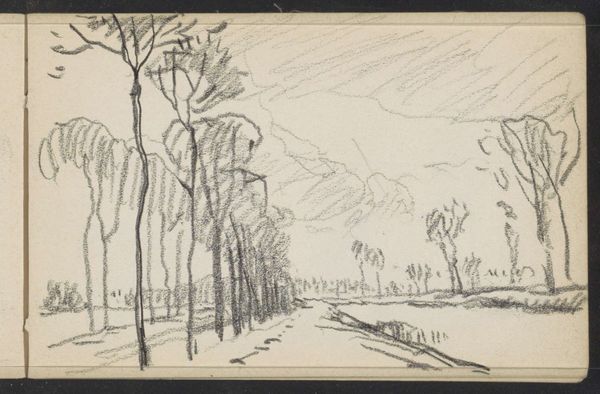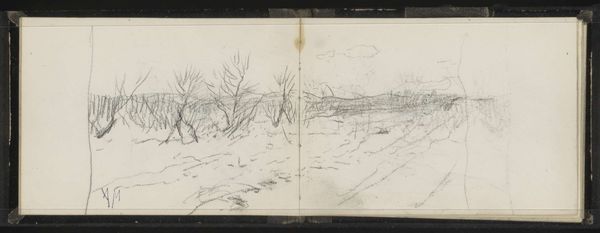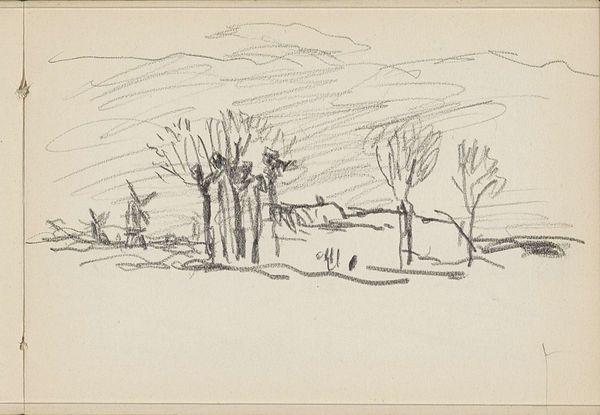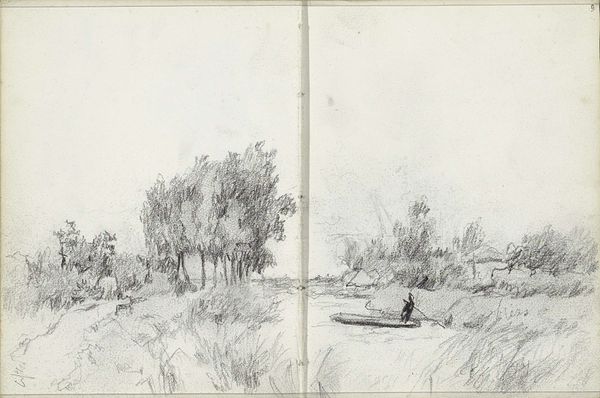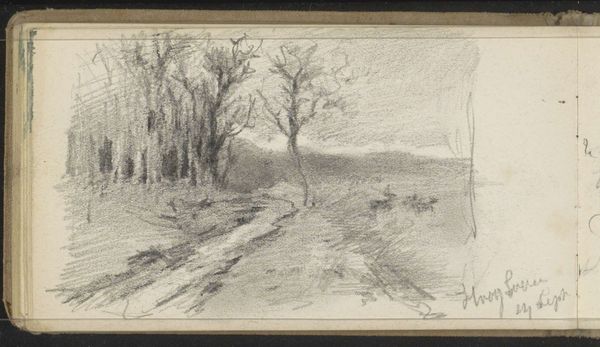
drawing, pencil
#
drawing
#
dutch-golden-age
#
landscape
#
pencil
#
realism
Dimensions: height 158 mm, width 247 mm
Copyright: Rijks Museum: Open Domain
Editor: This is Willem Cornelis Rip's "Figuur op een dijk langs een plas", a pencil drawing from around 1876-1877. It depicts a figure on a dike alongside a pool of water. There's a solitary feel to it; the landscape feels both inviting and stark. What do you see in this piece? Curator: I see a narrative deeply rooted in the social realities of rural life during that period. Rip’s choice to depict a lone figure immediately directs our attention to themes of isolation, perhaps even marginalization within a rapidly industrializing society. The stark landscape is not just scenery; it's a commentary. Editor: A commentary on what, exactly? Curator: The socio-economic transformations underway. Notice how the figure is positioned between the traditional rural setting and the subtle presence of what appears to be a windmill in the distance. This liminal space suggests the tensions between the agrarian past and the encroaching forces of modernization. Where does the figure belong in all of this? Editor: I suppose that's up for interpretation. Maybe it’s about adapting to change or feeling lost in the midst of it. Curator: Exactly! And we can push that further. Think about class, gender, access to resources. How might those factors impact an individual’s ability to navigate such shifts? Even something like access to the road itself would have had a socioeconomic impact for someone at the time. Editor: So, it's less about a simple landscape and more about the people who inhabit and interact with it. I see how understanding those societal layers can really deepen our understanding. Curator: Precisely. It's about bringing intersectional awareness to how we view art. Each element carries social weight, creating a richer, more nuanced narrative about life in that era. Editor: Thank you. I'll certainly look at art with a broader, more critical lens going forward.
Comments
No comments
Be the first to comment and join the conversation on the ultimate creative platform.







